Surya Namaskar
Surya Namaskar, often referred to as Sun Salutation, is a revered yoga practice that dates back thousands of years. Rooted in ancient tradition, Surya Namaskar is a sequence of twelve powerful yoga poses performed in a fluid, rhythmic manner. It is a holistic practice that integrates physical postures, breathwork, and mindfulness, offering a myriad of benefits for the body, mind, and spirit. In this comprehensive guide, we will explore the origins, steps, benefits, and variations of Surya Namaskar, providing you with everything you need to embark on your journey towards radiant health and vitality.
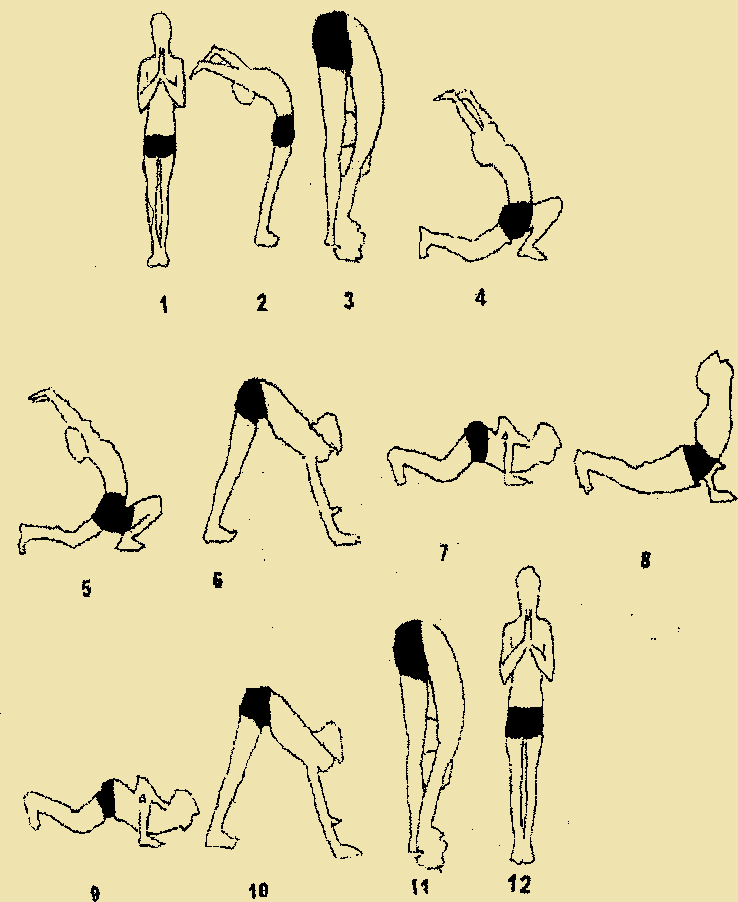
Origins of Surya Namaskar:
Surya Namaskar has its roots in the ancient Vedic tradition of India, where the sun was worshipped as a symbol of life, vitality, and enlightenment. The practice of Surya Namaskar was developed as a way to pay homage to the sun and harness its life-giving energy. Each pose in the sequence is dedicated to a specific aspect of the sun’s energy, symbolizing its transformative power in our lives.
Steps of Surya Namaskar:
Surya Namaskar consists of twelve distinct poses, each flowing seamlessly into the next. Here is a step-by-step guide to performing Surya Namaskar:
1. Pranamasana (Prayer Pose): Stand tall at the front of your mat, bring your palms together in front of your heart, and take a moment to set your intention for your practice.
2. Hastauttanasana (Raised Arms Pose): Inhale deeply as you sweep your arms overhead, lengthening through your spine and reaching towards the sky.
3. Hasta Padasana (Hand to Foot Pose): Exhale as you fold forward from your hips, bringing your hands to the floor beside your feet and lengthening your spine.
4. Ashwa Sanchalanasana (Equestrian Pose): Inhale as you step your right foot back into a low lunge position, keeping your left knee stacked directly over your left ankle.
5. Dandasana (Plank Pose): Exhale as you step your left foot back to meet your right, coming into a high plank position with your wrists aligned under your shoulders.
6. Ashtanga Namaskara (Eight-Limbed Pose): Lower your knees, chest, and chin to the mat, keeping your elbows close to your body and your hips lifted.
7. Bhujangasana (Cobra Pose): Inhale as you slide forward, coming into a gentle backbend with your chest lifted and your elbows bent.
8. Parvatasana (Mountain Pose): Exhale as you lift your hips towards the sky, coming into an inverted V shape with your heels pressing towards the floor.
9. Ashwa Sanchalanasana (Equestrian Pose): Inhale as you step your right foot forward between your hands, coming back into a low lunge position.
10. Hasta Padasana (Hand to Foot Pose): Exhale as you step your left foot forward to meet your right, folding forward over your legs with your hands on the floor.
11. Hastauttanasana (Raised Arms Pose): Inhale as you sweep your arms overhead, lengthening through your spine and reaching towards the sky.
12. Pranamasana (Prayer Pose): Exhale as you bring your palms together in front of your heart, returning to the starting position and completing the sequence.
Benefits of Surya Namaskar:
Surya Namaskar offers a wide range of benefits for the body, mind, and spirit. Some of the key benefits include:
- Improves flexibility, strength, and stamina
- Increases circulation and boosts metabolism
- Enhances respiratory function and lung capacity
- Balances the nervous system and reduces stress
- Promotes mental clarity, focus, and concentration
- Cultivates a sense of inner peace, harmony, and well-being
Variations of Surya Namaskar:
While the traditional Surya Namaskar sequence consists of twelve poses, there are many variations and modifications that can be incorporated to suit your individual needs and abilities. Some common variations include:
– Slow-paced Surya Namaskar: Performing each pose slowly and mindfully, focusing on breath awareness and alignment.
– Dynamic Surya Namaskar: Moving quickly from one pose to the next, creating a flowing and invigorating practice.
– Chair Surya Namaskar: Modifying the poses to be performed while seated in a chair, making the practice accessible to those with mobility issues or injuries.
– Advanced Surya Namaskar: Adding challenging poses or variations, such as handstands or backbends, to intensify the practice and deepen your experience.
Conclusion:
Surya Namaskar is a transformative practice that offers a holistic approach to health and well-being. Whether you’re a beginner or an experienced yogi, incorporating Surya Namaskar into your daily routine can help you cultivate strength, flexibility, and vitality on all levels. By honoring the sun and embracing its radiant energy, you can awaken the light within yourself and shine brightly in all aspects of your life.”
1. Pranamasana (Prayer pose) “# Pranamasana: Honoring the Sun through the Prayer Pose in Surya Namaskar
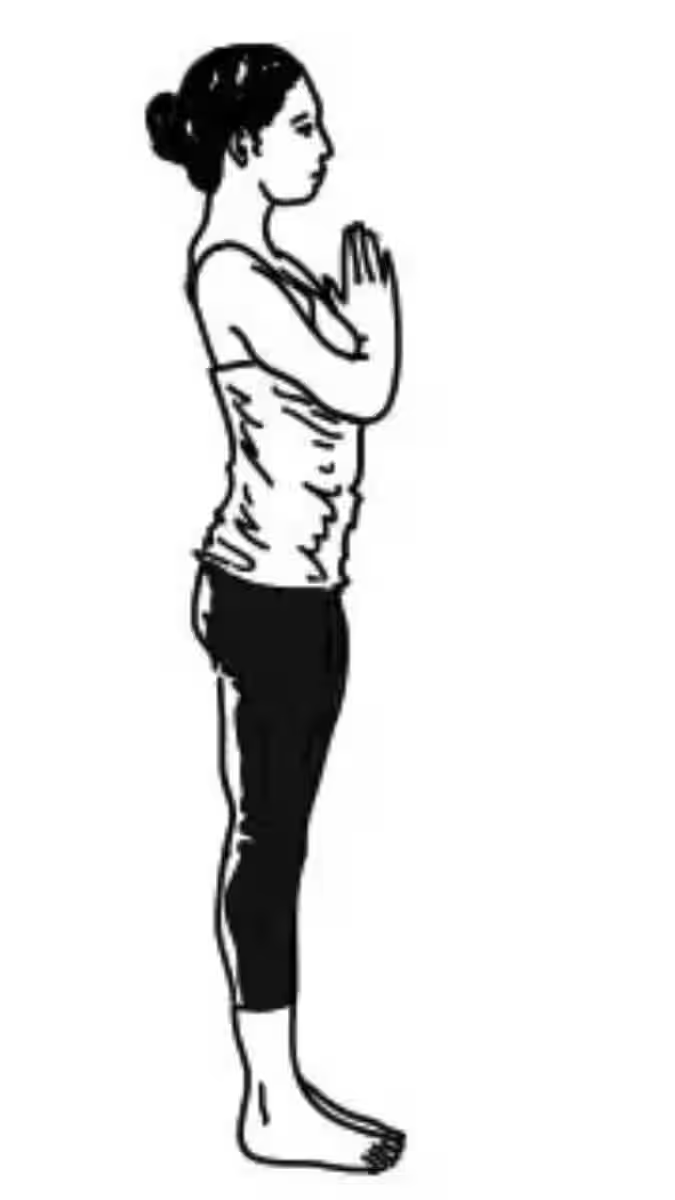
In the ancient practice of yoga, the Surya Namaskar (Sun Salutation) sequence is revered as a powerful and transformative series of poses. At the heart of this dynamic flow lies Pranamasana, also known as the Prayer Pose, which serves as a cornerstone of the practice. By understanding the significance and technique of Pranamasana, practitioners can deepen their connection to the sun, the source of all life, and unlock the profound benefits of this foundational asana (yoga pose).
## Exploring the Significance of Pranamasana in Surya Namaskar
Surya Namaskar is a 12-pose sequence that honors the sun, a celestial symbol of life, vitality, and growth. Pranamasana, the first pose in this series, sets the stage for the entire practice. In this pose, the practitioner stands with their feet together, hands pressed together at the heart center, in a gesture of reverence and gratitude towards the sun.
The word “”Pranamasana”” is derived from the Sanskrit words “”Pranama,”” meaning “”to bow or pay respects,”” and “”Asana,”” meaning “”pose.”” This simple yet powerful pose serves as a physical and symbolic representation of the practitioner’s connection to the sun, the source of all energy and life on Earth.
## Unlocking the Physical Benefits of Pranamasana
While Pranamasana may appear deceptively simple, it offers a wealth of physical benefits that contribute to the overall practice of Surya Namaskar. This pose helps to ground the practitioner, promoting a sense of stability and balance. Additionally, it gently stretches the shoulders, chest, and upper back, preparing the body for the dynamic transitions that follow.
By maintaining proper alignment in Pranamasana, with the feet hip-width apart and the hands pressed together at the heart center, the practitioner engages the core muscles, which can enhance overall posture and stability throughout the Surya Namaskar sequence.
## The Mental and Spiritual Aspects of Pranamasana
Beyond the physical benefits, Pranamasana also holds profound mental and spiritual significance within the Surya Namaskar practice. The act of standing with hands pressed together at the heart center, in a gesture of reverence and gratitude, can cultivate a sense of mindfulness and connection to the present moment.
This pose encourages the practitioner to pause, take a deep breath, and consciously focus their attention on the sun, the giver of life. This moment of quiet reflection and intention-setting can help to quiet the mind, reduce stress and anxiety, and foster a deeper sense of inner peace and harmony.
## Incorporating Pranamasana into Your Surya Namaskar Routine
To fully integrate Pranamasana into your Surya Namaskar practice, it is essential to approach the pose with intention and mindfulness. Begin by standing with your feet hip-width apart, arms at your sides. Take a deep breath, and as you exhale, bring your hands together at the heart center, palms touching.
Maintain a straight spine and engage your core, feeling a sense of grounding and stability. As you hold Pranamasana, take a moment to connect with the sun, express gratitude, and set your intention for the practice to come.
When transitioning out of Pranamasana, be mindful of your breath and the movement of your body, maintaining a smooth and fluid flow into the next pose in the Surya Namaskar sequence.
## Conclusion
Pranamasana, the Prayer Pose, is a foundational and deeply meaningful asana within the Surya Namaskar practice. By honoring the sun through this pose, practitioners can cultivate a deeper connection to the source of all life, while also unlocking a wealth of physical, mental, and spiritual benefits.
Whether you are a seasoned yogi or new to the practice of Surya Namaskar, incorporating Pranamasana into your routine can be a transformative experience. By approaching this pose with intention, mindfulness, and reverence, you can deepen your yoga practice and unlock the true power of the Sun Salutation.”
2. Hastauttanasana (Raised arms pose) “# Elevating Your Surya Namaskar with Hastauttanasana: The Raised Arms Pose
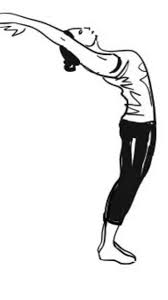
In the dynamic and revered practice of Surya Namaskar (Sun Salutation), each pose plays a crucial role in creating a harmonious and transformative flow. Among these foundational asanas (yoga poses) is Hastauttanasana, also known as the Raised Arms Pose. By understanding the significance and technique of this pose, practitioners can unlock a deeper connection to the sun and amplify the benefits of their Surya Namaskar practice.
## Unveiling the Significance of Hastauttanasana in Surya Namaskar
Surya Namaskar is a 12-pose sequence that honors the sun, the celestial source of life and energy. Hastauttanasana, the second pose in this series, serves as a powerful transition, linking the grounding and centering of the first pose, Pranamasana (Prayer Pose), with the dynamic backbend of the third pose, Urdhva Hastasana (Upward Salute).
In Hastauttanasana, the practitioner stands with feet hip-width apart, arms extended overhead, palms facing each other. This posture symbolizes the practitioner’s reverence and openness to the sun, a physical representation of their willingness to receive the sun’s blessings and energy.
## Unlocking the Physical Benefits of Hastauttanasana
Beyond its symbolic significance, Hastauttanasana offers a wealth of physical benefits that contribute to the overall practice of Surya Namaskar. This pose gently stretches the entire posterior chain, including the shoulders, back, and hamstrings, helping to increase mobility and flexibility.
Additionally, Hastauttanasana engages the core muscles, promoting stability and balance throughout the sequence. By lifting the arms overhead, the practitioner also opens the chest, allowing for deeper inhalations and a greater sense of expansion.
## The Mental and Spiritual Aspects of Hastauttanasana
Surya Namaskar is not only a physical practice but also a meditation in motion. Hastauttanasana, with its upward-reaching arms and open-hearted posture, can help to cultivate a sense of upliftment, joy, and connection to the divine.
As the practitioner stands with arms extended overhead, they are encouraged to take a deep breath, allowing the mind to quiet and the focus to shift inward. This moment of stillness and introspection can help to reduce stress, promote a sense of inner peace, and foster a deeper appreciation for the sun’s life-giving energy.
## Mastering the Technique of Hastauttanasana
To fully reap the benefits of Hastauttanasana, it is essential to focus on proper alignment and technique. Begin by standing with your feet hip-width apart, engaging your core and maintaining a neutral spine. As you inhale, slowly raise your arms overhead, keeping your palms facing each other and your shoulders relaxed.
Avoid hyperextending the lower back, and instead, focus on lifting from the crown of your head, creating length in the spine. Gaze upwards towards your hands, but be mindful not to strain your neck. Breathe deeply, allowing the expansion in your chest to guide the movement.
When transitioning out of Hastauttanasana, exhale as you lower your arms back to your sides, maintaining a sense of control and awareness throughout the movement.
## Incorporating Hastauttanasana into Your Surya Namaskar Routine
To fully integrate Hastauttanasana into your Surya Namaskar practice, approach each transition with intention and mindfulness. As you move from Pranamasana to Hastauttanasana, be conscious of your breath and the sensations in your body.
Experiment with the pace of your Surya Namaskar, finding a rhythm that allows you to fully experience each pose. Pause in Hastauttanasana, taking a moment to connect with the sun and cultivate a sense of gratitude and reverence.
## Conclusion
Hastauttanasana, the Raised Arms Pose, is a pivotal asana within the Surya Namaskar sequence, offering a wealth of physical, mental, and spiritual benefits. By mastering the technique and incorporating this pose with intention, practitioners can deepen their connection to the sun and elevate their Surya Namaskar practice to new heights.
Whether you are a seasoned yogi or new to the practice of Surya Namaskar, exploring Hastauttanasana can be a transformative experience. By embracing the symbolism and physicality of this pose, you can unlock a greater sense of balance, flexibility, and inner harmony, all while honoring the life-giving power of the sun.”
3. Hastapadasana (Standing forward bend) “# Unlocking the Transformative Power of Hastapadasana in Surya Namaskar
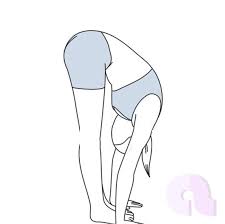
In the dynamic and revered practice of Surya Namaskar (Sun Salutation), each pose plays a crucial role in creating a harmonious and transformative flow. Among these foundational asanas (yoga poses) is Hastapadasana, also known as the Standing Forward Bend. By understanding the significance and technique of this pose, practitioners can unlock a deeper connection to the sun and amplify the benefits of their Surya Namaskar practice.
## Exploring the Significance of Hastapadasana in Surya Namaskar
Surya Namaskar is a 12-pose sequence that honors the sun, the celestial source of life and energy. Hastapadasana, the fourth pose in this series, serves as a pivotal transition, linking the upward-reaching Urdhva Hastasana (Upward Salute) with the deep forward fold that follows.
In Hastapadasana, the practitioner stands with their feet hip-width apart, hinging forward at the hips to fold the torso towards the thighs. This posture symbolizes a deep bow to the sun, a physical representation of the practitioner’s reverence and humility before the great celestial source.
## Unlocking the Physical Benefits of Hastapadasana
Hastapadasana offers a wealth of physical benefits that contribute to the overall practice of Surya Namaskar. This pose targets the posterior chain, including the hamstrings, calves, and lower back, providing a deep and effective stretch.
By folding forward, the practitioner also engages the core muscles to maintain stability and control throughout the movement. This activation of the abdominal region can help to improve posture, balance, and overall strength.
Additionally, Hastapadasana encourages the practitioner to focus on their breath, promoting a sense of calm and mindfulness that can be carried throughout the entire Surya Namaskar sequence.
## The Mental and Spiritual Aspects of Hastapadasana
Surya Namaskar is not only a physical practice but also a meditation in motion. Hastapadasana, with its deep forward fold and connection to the earth, can help to cultivate a sense of grounding, humility, and introspection.
As the practitioner folds forward, they are encouraged to close their eyes and turn their attention inward. This moment of stillness and self-reflection can help to reduce stress, promote a sense of inner peace, and foster a deeper appreciation for the sun’s life-giving energy.
Moreover, the act of bowing forward in Hastapadasana can be seen as a gesture of reverence and gratitude towards the sun, the source of all life on Earth. This symbolic connection can deepen the practitioner’s spiritual and emotional engagement with the Surya Namaskar practice.
## Mastering the Technique of Hastapadasana
To fully reap the benefits of Hastapadasana, it is essential to focus on proper alignment and technique. Begin by standing with your feet hip-width apart, engaging your core and maintaining a neutral spine. As you exhale, hinge forward at the hips, guiding your torso towards your thighs.
Avoid rounding the back, and instead, focus on lengthening the spine and keeping your gaze towards the floor. Engage your quadriceps to support the movement, and allow your hands to rest on your shins, ankles, or the floor, depending on your flexibility.
When transitioning out of Hastapadasana, inhale as you slowly rise back to a standing position, maintaining a sense of control and awareness throughout the movement.
## Incorporating Hastapadasana into Your Surya Namaskar Routine
To fully integrate Hastapadasana into your Surya Namaskar practice, approach each transition with intention and mindfulness. As you move from Urdhva Hastasana to Hastapadasana, be conscious of your breath and the sensations in your body.
Experiment with the pace of your Surya Namaskar, finding a rhythm that allows you to fully experience each pose. Pause in Hastapadasana, taking a moment to connect with the earth and cultivate a sense of grounding and humility.
## Conclusion
Hastapadasana, the Standing Forward Bend, is a pivotal asana within the Surya Namaskar sequence, offering a wealth of physical, mental, and spiritual benefits. By mastering the technique and incorporating this pose with intention, practitioners can deepen their connection to the sun and elevate their Surya Namaskar practice to new heights.
Whether you are a seasoned yogi or new to the practice of Surya Namaskar, exploring Hastapadasana can be a transformative experience. By embracing the symbolism and physicality of this pose, you can unlock a greater sense of balance, flexibility, and inner harmony, all while honoring the life-giving power of the sun.”
4. Ashwa Sanchalanasana (Equestrian pose) “# Unleash the Power of Ashwa Sanchalanasana in Your Surya Namaskar Practice
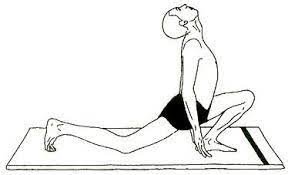
In the dynamic and revered practice of Surya Namaskar (Sun Salutation), each pose plays a crucial role in creating a harmonious and transformative flow. Among these foundational asanas (yoga poses) is Ashwa Sanchalanasana, also known as the Equestrian Pose. By understanding the significance and technique of this pose, practitioners can unlock a deeper connection to the sun and amplify the benefits of their Surya Namaskar practice.
## Unveiling the Significance of Ashwa Sanchalanasana in Surya Namaskar
Surya Namaskar is a 12-pose sequence that honors the sun, the celestial source of life and energy. Ashwa Sanchalanasana, the fifth pose in this series, serves as a dynamic transition, linking the grounding and introspective Hastapadasana (Standing Forward Bend) with the powerful Chaturanga Dandasana (Four-Limbed Staff Pose).
In Ashwa Sanchalanasana, the practitioner steps one leg back, sinking into a deep lunge while keeping the torso upright. This posture symbolizes the power and grace of the horse, a revered animal in many ancient cultures. The practitioner’s connection to the earth and the sun’s energy is expressed through this pose, creating a sense of strength, stability, and purpose.
## Unlocking the Physical Benefits of Ashwa Sanchalanasana
Ashwa Sanchalanasana offers a wealth of physical benefits that contribute to the overall practice of Surya Namaskar. This pose targets the lower body, strengthening the quadriceps, hamstrings, and glutes, while also stretching the hip flexors and psoas muscles.
By sinking into the lunge, the practitioner engages the core muscles to maintain balance and stability. This activation of the abdominal region can help to improve posture, balance, and overall strength.
Additionally, Ashwa Sanchalanasana encourages the practitioner to focus on their breath, promoting a sense of control and mindfulness that can be carried throughout the entire Surya Namaskar sequence.
## The Mental and Spiritual Aspects of Ashwa Sanchalanasana
Surya Namaskar is not only a physical practice but also a meditation in motion. Ashwa Sanchalanasana, with its powerful and grounded stance, can help to cultivate a sense of confidence, determination, and inner strength.
As the practitioner steps back into the lunge, they are encouraged to ground their back foot, connecting to the earth and the sun’s energy. This moment of steadfast focus and presence can help to reduce stress, promote a sense of inner calm, and foster a deeper appreciation for the sun’s life-giving power.
Moreover, the symbolism of the horse in Ashwa Sanchalanasana can be seen as a representation of the practitioner’s own inner strength and willpower. By embracing the power and grace of this pose, the practitioner can tap into their own reserves of courage and resilience, both on and off the mat.
## Mastering the Technique of Ashwa Sanchalanasana
To fully reap the benefits of Ashwa Sanchalanasana, it is essential to focus on proper alignment and technique. Begin by standing with your feet hip-width apart, engaging your core and maintaining a neutral spine. As you exhale, step one leg back, sinking into a deep lunge while keeping your torso upright.
Ensure that your front knee is stacked directly over your front ankle, and your back heel is firmly grounded. Engage your quadriceps and glutes to support the movement, and avoid letting your front knee travel too far forward.
When transitioning out of Ashwa Sanchalanasana, inhale as you step your back foot forward, returning to a standing position with control and awareness.
## Incorporating Ashwa Sanchalanasana into Your Surya Namaskar Routine
To fully integrate Ashwa Sanchalanasana into your Surya Namaskar practice, approach each transition with intention and mindfulness. As you move from Hastapadasana to Ashwa Sanchalanasana, be conscious of your breath and the sensations in your body.
Experiment with the pace of your Surya Namaskar, finding a rhythm that allows you to fully experience each pose. Pause in Ashwa Sanchalanasana, taking a moment to connect with the earth and the sun’s energy, and cultivate a sense of inner strength and determination.
## Conclusion
Ashwa Sanchalanasana, the Equestrian Pose, is a pivotal asana within the Surya Namaskar sequence, offering a wealth of physical, mental, and spiritual benefits. By mastering the technique and incorporating this pose with intention, practitioners can deepen their connection to the sun and elevate their Surya Namaskar practice to new heights.
Whether you are a seasoned yogi or new to the practice of Surya Namaskar, exploring Ashwa Sanchalanasana can be a transformative experience. By embracing the symbolism and physicality of this pose, you can unlock a greater sense of strength, stability, and inner courage, all while honoring the life-giving power of the sun.”
5. Dandasana (Stick pose) “# Mastering Dandasana: The Foundation of Strength in Surya Namaskar

In the dynamic and revered practice of Surya Namaskar (Sun Salutation), each pose plays a crucial role in creating a harmonious and transformative flow. Among these foundational asanas (yoga poses) is Dandasana, also known as the Stick Pose. By understanding the significance and technique of this pose, practitioners can unlock a deeper connection to the sun and amplify the benefits of their Surya Namaskar practice.
## Unveiling the Significance of Dandasana in Surya Namaskar
Surya Namaskar is a 12-pose sequence that honors the sun, the celestial source of life and energy. Dandasana, the seventh pose in this series, serves as a powerful transitional pose, linking the dynamic movements of the previous poses with the challenging Chaturanga Dandasana (Four-Limbed Staff Pose) that follows.
In Dandasana, the practitioner assumes a straight-line plank position, with their body forming a straight line from head to heels. This posture symbolizes the steadiness and strength of a stick, a metaphor for the practitioner’s own inner fortitude and resilience.
## Unlocking the Physical Benefits of Dandasana
Dandasana offers a wealth of physical benefits that contribute to the overall practice of Surya Namaskar. This pose targets the entire body, engaging the core, arms, shoulders, and legs to maintain the straight-line plank position.
By holding Dandasana, the practitioner develops increased core strength, stability, and endurance, which are essential for navigating the more challenging poses within the Surya Namaskar sequence. Additionally, this pose helps to tone and strengthen the muscles of the upper body, preparing the practitioner for the challenging push-up action of Chaturanga Dandasana.
Dandasana also encourages the practitioner to focus on their breath, promoting a sense of control and mindfulness that can be carried throughout the entire Surya Namaskar practice.
## The Mental and Spiritual Aspects of Dandasana
Surya Namaskar is not only a physical practice but also a meditation in motion. Dandasana, with its unwavering and steadfast posture, can help to cultivate a sense of focus, discipline, and inner strength.
As the practitioner holds the straight-line plank position, they are encouraged to breathe deeply and maintain a steady gaze, quieting the mind and turning their attention inward. This moment of focused concentration can help to reduce stress, promote a sense of calm, and foster a deeper appreciation for the sun’s life-giving power.
Moreover, the symbolism of the stick in Dandasana can be seen as a representation of the practitioner’s own inner resilience and determination. By embracing the strength and stability of this pose, the practitioner can tap into their own reserves of courage and discipline, both on and off the mat.
## Mastering the Technique of Dandasana
To fully reap the benefits of Dandasana, it is essential to focus on proper alignment and technique. Begin by positioning your hands shoulder-width apart, with your wrists stacked directly under your shoulders. Engage your core and lift your body off the mat, forming a straight line from your head to your heels.
Avoid letting your hips sag or your lower back arch. Instead, focus on engaging your glutes and quadriceps to maintain a neutral spine and strong, stable posture. Breathe deeply, ensuring that your movements are controlled and precise.
When transitioning out of Dandasana, be mindful of your breath and the sensations in your body, maintaining a smooth and controlled flow into the next pose in the Surya Namaskar sequence.
## Incorporating Dandasana into Your Surya Namaskar Routine
To fully integrate Dandasana into your Surya Namaskar practice, approach each transition with intention and mindfulness. As you move from Chaturanga Dandasana to Dandasana, be conscious of your breath and the engagement of your core and upper body muscles.
Experiment with the pace of your Surya Namaskar, finding a rhythm that allows you to fully experience each pose. Pause in Dandasana, taking a moment to connect with the strength and stability of the pose, and cultivate a sense of focus and discipline.
## Conclusion
Dandasana, the Stick Pose, is a pivotal asana within the Surya Namaskar sequence, offering a wealth of physical, mental, and spiritual benefits. By mastering the technique and incorporating this pose with intention, practitioners can deepen their connection to the sun and elevate their Surya Namaskar practice to new heights.
Whether you are a seasoned yogi or new to the practice of Surya Namaskar, exploring Dandasana can be a transformative experience. By embracing the symbolism and physicality of this pose, you can unlock a greater sense of strength, stability, and inner fortitude, all while honoring the life-giving power of the sun.”
6. Ashtanga Namaskara (Salute with eight parts or points) “# Unlocking the Power of Ashtanga Namaskara in Surya Namaskar
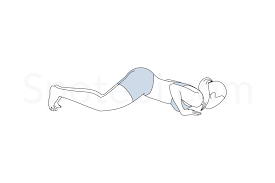
In the dynamic and revered practice of Surya Namaskar (Sun Salutation), each pose plays a crucial role in creating a harmonious and transformative flow. Among these foundational asanas (yoga poses) is Ashtanga Namaskara, also known as the Salute with Eight Parts or Points. By understanding the significance and technique of this pose, practitioners can unlock a deeper connection to the sun and amplify the benefits of their Surya Namaskar practice.
## Unveiling the Significance of Ashtanga Namaskara in Surya Namaskar
Surya Namaskar is a 12-pose sequence that honors the sun, the celestial source of life and energy. Ashtanga Namaskara, the eighth pose in this series, serves as a powerful transitional pose, linking the challenging Chaturanga Dandasana (Four-Limbed Staff Pose) with the backbend of Urdhva Mukha Svanasana (Upward Facing Dog Pose).
In Ashtanga Namaskara, the practitioner lowers their body to the mat, touching the ground with eight points: the hands, knees, chest, and chin. This posture symbolizes a deep bow of reverence and humility towards the sun, a physical representation of the practitioner’s gratitude and devotion.
## Unlocking the Physical Benefits of Ashtanga Namaskara
Ashtanga Namaskara offers a wealth of physical benefits that contribute to the overall practice of Surya Namaskar. This pose targets the upper body, particularly the arms, shoulders, and chest, helping to build strength and endurance.
By lowering the body to the mat, the practitioner also engages the core muscles to maintain control and stability throughout the movement. This core engagement can help to improve posture, balance, and overall strength, which are essential for navigating the more challenging poses within the Surya Namaskar sequence.
Additionally, Ashtanga Namaskara encourages the practitioner to focus on their breath, promoting a sense of control and mindfulness that can be carried throughout the entire Surya Namaskar practice.
## The Mental and Spiritual Aspects of Ashtanga Namaskara
Surya Namaskar is not only a physical practice but also a meditation in motion. Ashtanga Namaskara, with its deep bow and connection to the earth, can help to cultivate a sense of humility, gratitude, and reverence towards the sun.
As the practitioner lowers their body to the mat, they are encouraged to close their eyes and turn their attention inward. This moment of stillness and introspection can help to reduce stress, promote a sense of inner peace, and foster a deeper appreciation for the sun’s life-giving power.
Moreover, the symbolic gesture of the eight-point salutation in Ashtanga Namaskara can be seen as a representation of the practitioner’s wholehearted dedication and commitment to the Surya Namaskar practice. By embracing this pose with intention and devotion, the practitioner can deepen their connection to the sun and the spiritual aspects of their yoga journey.
## Mastering the Technique of Ashtanga Namaskara
To fully reap the benefits of Ashtanga Namaskara, it is essential to focus on proper alignment and technique. Begin by positioning your hands shoulder-width apart, with your wrists stacked directly under your shoulders. Engage your core and lower your body to the mat, touching the ground with your knees, chest, and chin.
Avoid letting your hips sag or your lower back arch. Instead, focus on maintaining a straight line from your head to your heels, engaging your glutes and quadriceps to support the movement.
When transitioning out of Ashtanga Namaskara, be mindful of your breath and the sensations in your body, maintaining a smooth and controlled flow into the next pose in the Surya Namaskar sequence.
## Incorporating Ashtanga Namaskara into Your Surya Namaskar Routine
To fully integrate Ashtanga Namaskara into your Surya Namaskar practice, approach each transition with intention and mindfulness. As you move from Chaturanga Dandasana to Ashtanga Namaskara, be conscious of your breath and the engagement of your upper body muscles.
Experiment with the pace of your Surya Namaskar, finding a rhythm that allows you to fully experience each pose. Pause in Ashtanga Namaskara, taking a moment to connect with the earth, express gratitude towards the sun, and cultivate a sense of humility and reverence.
## Conclusion
Ashtanga Namaskara, the Salute with Eight Parts or Points, is a pivotal asana within the Surya Namaskar sequence, offering a wealth of physical, mental, and spiritual benefits. By mastering the technique and incorporating this pose with intention, practitioners can deepen their connection to the sun and elevate their Surya Namaskar practice to new heights.
Whether you are a seasoned yogi or new to the practice of Surya Namaskar, exploring Ashtanga Namaskara can be a transformative experience. By embracing the symbolism and physicality of this pose, you can unlock a greater sense of humility, gratitude, and inner harmony, all while honoring the life-giving power of the sun.”
7. Bhujangasana (Cobra pose) “# Unleash the Power of Bhujangasana in Your Surya Namaskar Practice
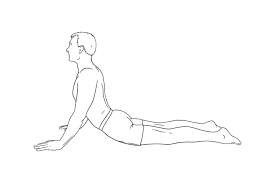
In the dynamic and revered practice of Surya Namaskar (Sun Salutation), each pose plays a crucial role in creating a harmonious and transformative flow. Among these foundational asanas (yoga poses) is Bhujangasana, also known as the Cobra Pose. By understanding the significance and technique of this pose, practitioners can unlock a deeper connection to the sun and amplify the benefits of their Surya Namaskar practice.
## Unveiling the Significance of Bhujangasana in Surya Namaskar
Surya Namaskar is a 12-pose sequence that honors the sun, the celestial source of life and energy. Bhujangasana, the ninth pose in this series, serves as a powerful backbend, linking the grounding and introspective Ashtanga Namaskara (Salute with Eight Parts or Points) with the forward-folding Adho Mukha Svanasana (Downward Facing Dog Pose).
In Bhujangasana, the practitioner lifts their chest off the mat, arching their back and opening their heart towards the sky. This posture symbolizes the grace and power of the cobra, a revered snake in many ancient cultures. The practitioner’s connection to the sun’s energy is expressed through this pose, creating a sense of strength, flexibility, and resilience.
## Unlocking the Physical Benefits of Bhujangasana
Bhujangasana offers a wealth of physical benefits that contribute to the overall practice of Surya Namaskar. This pose targets the back, shoulders, and arms, helping to increase mobility, flexibility, and strength in these areas.
By lifting the chest and arching the back, the practitioner engages the core muscles to maintain stability and control throughout the movement. This activation of the abdominal region can help to improve posture, balance, and overall strength, which are essential for navigating the more challenging poses within the Surya Namaskar sequence.
Additionally, Bhujangasana encourages the practitioner to focus on their breath, promoting a sense of control and mindfulness that can be carried throughout the entire Surya Namaskar practice.
## The Mental and Spiritual Aspects of Bhujangasana
Surya Namaskar is not only a physical practice but also a meditation in motion. Bhujangasana, with its powerful and uplifting backbend, can help to cultivate a sense of confidence, determination, and inner strength.
As the practitioner lifts their chest and opens their heart towards the sky, they are encouraged to gaze upwards, connecting with the sun’s energy and radiance. This moment of focused attention and intention can help to reduce stress, promote a sense of inner calm, and foster a deeper appreciation for the sun’s life-giving power.
Moreover, the symbolism of the cobra in Bhujangasana can be seen as a representation of the practitioner’s own inner wisdom, resilience, and transformation. By embracing the power and grace of this pose, the practitioner can tap into their own reserves of courage and self-awareness, both on and off the mat.
## Mastering the Technique of Bhujangasana
To fully reap the benefits of Bhujangasana, it is essential to focus on proper alignment and technique. Begin by lying on your stomach, with your hands placed under your shoulders and your elbows tucked close to your body. As you inhale, press into your hands and lift your chest off the mat, arching your back and keeping your hips and legs grounded.
Avoid hyperextending your lower back, and instead, focus on engaging your core muscles to support the movement. Gaze upwards, but be mindful not to strain your neck. Breathe deeply, allowing the expansion in your chest to guide the movement.
When transitioning out of Bhujangasana, exhale as you slowly lower your chest back to the mat, maintaining a sense of control and awareness throughout the movement.
## Incorporating Bhujangasana into Your Surya Namaskar Routine
To fully integrate Bhujangasana into your Surya Namaskar practice, approach each transition with intention and mindfulness. As you move from Ashtanga Namaskara to Bhujangasana, be conscious of your breath and the sensations in your body.
Experiment with the pace of your Surya Namaskar, finding a rhythm that allows you to fully experience each pose. Pause in Bhujangasana, taking a moment to connect with the sun’s energy, cultivate a sense of inner strength and determination, and express gratitude for the practice.
## Conclusion
Bhujangasana, the Cobra Pose, is a pivotal asana within the Surya Namaskar sequence, offering a wealth of physical, mental, and spiritual benefits. By mastering the technique and incorporating this pose with intention, practitioners can deepen their connection to the sun and elevate their Surya Namaskar practice to new heights.
Whether you are a seasoned yogi or new to the practice of Surya Namaskar, exploring Bhujangasana can be a transformative experience. By embracing the symbolism and physicality of this pose, you can unlock a greater sense of strength, flexibility, and inner courage, all while honoring the life-giving power of the sun.”
8. Adho Mukha Svanasana (Downward facing dog pose) “# Mastering Adho Mukha Svanasana: The Cornerstone of Surya Namaskar
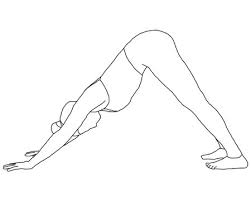
In the dynamic and revered practice of Surya Namaskar (Sun Salutation), each pose plays a crucial role in creating a harmonious and transformative flow. Among these foundational asanas (yoga poses) is Adho Mukha Svanasana, also known as the Downward Facing Dog Pose. By understanding the significance and technique of this pose, practitioners can unlock a deeper connection to the sun and amplify the benefits of their Surya Namaskar practice.
## Unveiling the Significance of Adho Mukha Svanasana in Surya Namaskar
Surya Namaskar is a 12-pose sequence that honors the sun, the celestial source of life and energy. Adho Mukha Svanasana, the tenth pose in this series, serves as a powerful transitional pose, linking the backbend of Urdhva Mukha Svanasana (Upward Facing Dog Pose) with the forward fold of Uttanasana (Standing Forward Bend).
In Adho Mukha Svanasana, the practitioner assumes an inverted “”V”” shape, with their hands and feet firmly grounded and their hips lifted towards the sky. This posture symbolizes the strength, stability, and grounding connection to the earth, while also allowing the practitioner to receive the sun’s nourishing energy.
## Unlocking the Physical Benefits of Adho Mukha Svanasana
Adho Mukha Svanasana offers a wealth of physical benefits that contribute to the overall practice of Surya Namaskar. This pose targets multiple muscle groups simultaneously, including the upper body, core, and lower body, helping to build strength, flexibility, and endurance.
By engaging the arms and shoulders to support the body’s weight, the practitioner strengthens the upper body, preparing for the more challenging poses to come. Additionally, the inversion of Adho Mukha Svanasana helps to stretch the hamstrings, calves, and Achilles tendon, improving overall flexibility and mobility.
Adho Mukha Svanasana also encourages the practitioner to focus on their breath, promoting a sense of control and mindfulness that can be carried throughout the entire Surya Namaskar practice.
## The Mental and Spiritual Aspects of Adho Mukha Svanasana
Surya Namaskar is not only a physical practice but also a meditation in motion. Adho Mukha Svanasana, with its grounded and inverted posture, can help to cultivate a sense of stability, focus, and connection to the earth and the sun’s energy.
As the practitioner assumes the Downward Facing Dog Pose, they are encouraged to breathe deeply and turn their gaze inward. This moment of quiet reflection and awareness can help to reduce stress, promote a sense of inner calm, and foster a deeper appreciation for the sun’s life-giving power.
Moreover, the symbolic gesture of the inverted “”V”” shape in Adho Mukha Svanasana can be seen as a representation of the practitioner’s willingness to receive the sun’s blessings and energy. By embracing this pose with intention and devotion, the practitioner can deepen their connection to the sun and the spiritual aspects of their yoga journey.
## Mastering the Technique of Adho Mukha Svanasana
To fully reap the benefits of Adho Mukha Svanasana, it is essential to focus on proper alignment and technique. Begin by positioning your hands shoulder-width apart, with your wrists stacked directly under your shoulders. Engage your core and lift your hips towards the sky, forming an inverted “”V”” shape with your body.
Avoid rounding your back or letting your heels lift too high off the mat. Instead, focus on engaging your quadriceps and glutes to support the movement, and keep your gaze directed towards your feet.
When transitioning out of Adho Mukha Svanasana, be mindful of your breath and the sensations in your body, maintaining a smooth and controlled flow into the next pose in the Surya Namaskar sequence.
## Incorporating Adho Mukha Svanasana into Your Surya Namaskar Routine
To fully integrate Adho Mukha Svanasana into your Surya Namaskar practice, approach each transition with intention and mindfulness. As you move from Urdhva Mukha Svanasana to Adho Mukha Svanasana, be conscious of your breath and the engagement of your upper body and core muscles.
Experiment with the pace of your Surya Namaskar, finding a rhythm that allows you to fully experience each pose. Pause in Adho Mukha Svanasana, taking a moment to connect with the earth, express gratitude towards the sun, and cultivate a sense of stability and focus.
## Conclusion
Adho Mukha Svanasana, the Downward Facing Dog Pose, is a pivotal asana within the Surya Namaskar sequence, offering a wealth of physical, mental, and spiritual benefits. By mastering the technique and incorporating this pose with intention, practitioners can deepen their connection to the sun and elevate their Surya Namaskar practice to new heights.
Whether you are a seasoned yogi or new to the practice of Surya Namaskar, exploring Adho Mukha Svanasana can be a transformative experience. By embracing the symbolism and physicality of this pose, you can unlock a greater sense of strength, stability, and inner harmony, all while honoring the life-giving power of the sun.”
9. Ashwa Sanchalanasana (Equestrian pose) “# Unleash the Equestrian Power in Ashwa Sanchalanasana: A Key Pose in Surya Namaskar
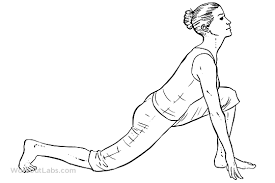
In the dynamic and revered practice of Surya Namaskar (Sun Salutation), each pose plays a crucial role in creating a harmonious and transformative flow. Among these foundational asanas (yoga poses) is Ashwa Sanchalanasana, also known as the Equestrian Pose. By understanding the significance and technique of this pose, practitioners can unlock a deeper connection to the sun and amplify the benefits of their Surya Namaskar practice.
## Unveiling the Significance of Ashwa Sanchalanasana in Surya Namaskar
Surya Namaskar is a 12-pose sequence that honors the sun, the celestial source of life and energy. Ashwa Sanchalanasana, the fifth pose in this series, serves as a powerful transitional pose, linking the grounding and introspective Hastapadasana (Standing Forward Bend) with the challenging Chaturanga Dandasana (Four-Limbed Staff Pose).
In Ashwa Sanchalanasana, the practitioner steps one leg back, sinking into a deep lunge while keeping the torso upright. This posture symbolizes the power and grace of the horse, a revered animal in many ancient cultures. The practitioner’s connection to the earth and the sun’s energy is expressed through this pose, creating a sense of strength, stability, and purpose.
## Unlocking the Physical Benefits of Ashwa Sanchalanasana
Ashwa Sanchalanasana offers a wealth of physical benefits that contribute to the overall practice of Surya Namaskar. This pose targets the lower body, strengthening the quadriceps, hamstrings, and glutes, while also stretching the hip flexors and psoas muscles.
By sinking into the lunge, the practitioner engages the core muscles to maintain balance and stability. This activation of the abdominal region can help to improve posture, balance, and overall strength, which are essential for navigating the more challenging poses within the Surya Namaskar sequence.
Additionally, Ashwa Sanchalanasana encourages the practitioner to focus on their breath, promoting a sense of control and mindfulness that can be carried throughout the entire Surya Namaskar practice.
## The Mental and Spiritual Aspects of Ashwa Sanchalanasana
Surya Namaskar is not only a physical practice but also a meditation in motion. Ashwa Sanchalanasana, with its powerful and grounded stance, can help to cultivate a sense of confidence, determination, and inner strength.
As the practitioner steps back into the lunge, they are encouraged to ground their back foot, connecting to the earth and the sun’s energy. This moment of steadfast focus and presence can help to reduce stress, promote a sense of inner calm, and foster a deeper appreciation for the sun’s life-giving power.
Moreover, the symbolism of the horse in Ashwa Sanchalanasana can be seen as a representation of the practitioner’s own inner strength and willpower. By embracing the power and grace of this pose, the practitioner can tap into their own reserves of courage and resilience, both on and off the mat.
## Mastering the Technique of Ashwa Sanchalanasana
To fully reap the benefits of Ashwa Sanchalanasana, it is essential to focus on proper alignment and technique. Begin by standing with your feet hip-width apart, engaging your core and maintaining a neutral spine. As you exhale, step one leg back, sinking into a deep lunge while keeping your torso upright.
Ensure that your front knee is stacked directly over your front ankle, and your back heel is firmly grounded. Engage your quadriceps and glutes to support the movement, and avoid letting your front knee travel too far forward.
When transitioning out of Ashwa Sanchalanasana, inhale as you step your back foot forward, returning to a standing position with control and awareness.
## Incorporating Ashwa Sanchalanasana into Your Surya Namaskar Routine
To fully integrate Ashwa Sanchalanasana into your Surya Namaskar practice, approach each transition with intention and mindfulness. As you move from Hastapadasana to Ashwa Sanchalanasana, be conscious of your breath and the sensations in your body.
Experiment with the pace of your Surya Namaskar, finding a rhythm that allows you to fully experience each pose. Pause in Ashwa Sanchalanasana, taking a moment to connect with the earth and the sun’s energy, and cultivate a sense of inner strength and determination.
## Conclusion
Ashwa Sanchalanasana, the Equestrian Pose, is a pivotal asana within the Surya Namaskar sequence, offering a wealth of physical, mental, and spiritual benefits. By mastering the technique and incorporating this pose with intention, practitioners can deepen their connection to the sun and elevate their Surya Namaskar practice to new heights.
Whether you are a seasoned yogi or new to the practice of Surya Namaskar, exploring Ashwa Sanchalanasana can be a transformative experience. By embracing the symbolism and physicality of this pose, you can unlock a greater sense of strength, stability, and inner courage, all while honoring the life-giving power of the sun.”
10.Hastapadasana (Standing forward bend) “# Hastapadasana: Unlocking the Transformative Power in the Standing Forward Bend of Surya Namaskar
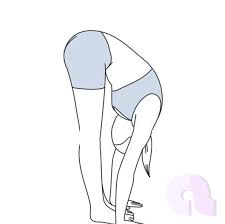
In the dynamic and revered practice of Surya Namaskar (Sun Salutation), each asana (yoga pose) plays a crucial role in creating a harmonious and transformative flow. Among these foundational poses is Hastapadasana, also known as the Standing Forward Bend. By understanding the significance and technique of this pose, practitioners can unlock a deeper connection to the sun and amplify the benefits of their Surya Namaskar practice.
## The Significance of Hastapadasana in Surya Namaskar
Surya Namaskar is a 12-pose sequence that honors the sun, the celestial source of life and energy. Hastapadasana, the fourth pose in this series, serves as a pivotal transition, linking the upward-reaching Urdhva Hastasana (Upward Salute) with the deep forward fold that follows.
In Hastapadasana, the practitioner stands with their feet hip-width apart, hinging forward at the hips to fold the torso towards the thighs. This posture symbolizes a deep bow to the sun, a physical representation of the practitioner’s reverence and humility before the great celestial source.
## The Physical Benefits of Hastapadasana
Hastapadasana offers a wealth of physical benefits that contribute to the overall practice of Surya Namaskar. This pose targets the posterior chain, including the hamstrings, calves, and lower back, providing a deep and effective stretch.
By folding forward, the practitioner also engages the core muscles to maintain stability and control throughout the movement. This activation of the abdominal region can help to improve posture, balance, and overall strength.
Additionally, Hastapadasana encourages the practitioner to focus on their breath, promoting a sense of calm and mindfulness that can be carried throughout the entire Surya Namaskar sequence.
## The Mental and Spiritual Aspects of Hastapadasana
Surya Namaskar is not only a physical practice but also a meditation in motion. Hastapadasana, with its deep forward fold and connection to the earth, can help to cultivate a sense of grounding, humility, and introspection.
As the practitioner folds forward, they are encouraged to close their eyes and turn their attention inward. This moment of stillness and self-reflection can help to reduce stress, promote a sense of inner peace, and foster a deeper appreciation for the sun’s life-giving energy.
Moreover, the act of bowing forward in Hastapadasana can be seen as a gesture of reverence and gratitude towards the sun, the source of all life on Earth. This symbolic connection can deepen the practitioner’s spiritual and emotional engagement with the Surya Namaskar practice.
## Mastering the Technique of Hastapadasana
To fully reap the benefits of Hastapadasana, it is essential to focus on proper alignment and technique. Begin by standing with your feet hip-width apart, engaging your core and maintaining a neutral spine. As you exhale, hinge forward at the hips, guiding your torso towards your thighs.
Avoid rounding your back, and instead, focus on lengthening the spine and keeping your gaze towards the floor. Engage your quadriceps to support the movement, and allow your hands to rest on your shins, ankles, or the floor, depending on your flexibility.
When transitioning out of Hastapadasana, inhale as you slowly rise back to a standing position, maintaining a sense of control and awareness throughout the movement.
## Incorporating Hastapadasana into Your Surya Namaskar Routine
To fully integrate Hastapadasana into your Surya Namaskar practice, approach each transition with intention and mindfulness. As you move from Urdhva Hastasana to Hastapadasana, be conscious of your breath and the sensations in your body.
Experiment with the pace of your Surya Namaskar, finding a rhythm that allows you to fully experience each pose. Pause in Hastapadasana, taking a moment to connect with the earth and cultivate a sense of grounding and humility.
## Conclusion
Hastapadasana, the Standing Forward Bend, is a pivotal asana within the Surya Namaskar sequence, offering a wealth of physical, mental, and spiritual benefits. By mastering the technique and incorporating this pose with intention, practitioners can deepen their connection to the sun and elevate their Surya Namaskar practice to new heights.
Whether you are a seasoned yogi or new to the practice of Surya Namaskar, exploring Hastapadasana can be a transformative experience. By embracing the symbolism and physicality of this pose, you can unlock a greater sense of balance, flexibility, and inner harmony, all while honoring the life-giving power of the sun.”
11.Hastauttanasana (Raised arms pose) “# Elevating Your Surya Namaskar with Hastauttanasana: The Raised Arms Pose
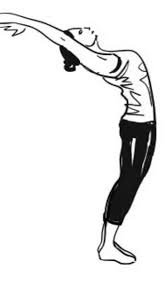
In the dynamic and revered practice of Surya Namaskar (Sun Salutation), each asana (yoga pose) plays a crucial role in creating a harmonious and transformative flow. Among these foundational poses is Hastauttanasana, also known as the Raised Arms Pose. By understanding the significance and technique of this pose, practitioners can unlock a deeper connection to the sun and amplify the benefits of their Surya Namaskar practice.
## The Significance of Hastauttanasana in Surya Namaskar
Surya Namaskar is a 12-pose sequence that honors the sun, the celestial source of life and energy. Hastauttanasana, the second pose in this series, serves as a powerful transition, linking the grounding and centering of the first pose, Pranamasana (Prayer Pose), with the dynamic backbend of the third pose, Urdhva Hastasana (Upward Salute).
In Hastauttanasana, the practitioner stands with feet hip-width apart, arms extended overhead, palms facing each other. This posture symbolizes the practitioner’s reverence and openness to the sun, a physical representation of their willingness to receive the sun’s blessings and energy.
## The Physical Benefits of Hastauttanasana
Beyond its symbolic significance, Hastauttanasana offers a wealth of physical benefits that contribute to the overall practice of Surya Namaskar. This pose gently stretches the entire posterior chain, including the shoulders, back, and hamstrings, helping to increase mobility and flexibility.
Additionally, Hastauttanasana engages the core muscles, promoting stability and balance throughout the sequence. By lifting the arms overhead, the practitioner also opens the chest, allowing for deeper inhalations and a greater sense of expansion.
## The Mental and Spiritual Aspects of Hastauttanasana
Surya Namaskar is not only a physical practice but also a meditation in motion. Hastauttanasana, with its upward-reaching arms and open-hearted posture, can help to cultivate a sense of upliftment, joy, and connection to the divine.
As the practitioner stands with arms extended overhead, they are encouraged to take a deep breath, allowing the mind to quiet and the focus to shift inward. This moment of stillness and introspection can help to reduce stress, promote a sense of inner peace, and foster a deeper appreciation for the sun’s life-giving energy.
## Mastering the Technique of Hastauttanasana
To fully reap the benefits of Hastauttanasana, it is essential to focus on proper alignment and technique. Begin by standing with your feet hip-width apart, engaging your core and maintaining a neutral spine. As you inhale, slowly raise your arms overhead, keeping your palms facing each other and your shoulders relaxed.
Avoid hyperextending the lower back, and instead, focus on lifting from the crown of your head, creating length in the spine. Gaze upwards towards your hands, but be mindful not to strain your neck. Breathe deeply, allowing the expansion in your chest to guide the movement.
When transitioning out of Hastauttanasana, exhale as you lower your arms back to your sides, maintaining a sense of control and awareness throughout the movement.
## Incorporating Hastauttanasana into Your Surya Namaskar Routine
To fully integrate Hastauttanasana into your Surya Namaskar practice, approach each transition with intention and mindfulness. As you move from Pranamasana to Hastauttanasana, be conscious of your breath and the sensations in your body.
Experiment with the pace of your Surya Namaskar, finding a rhythm that allows you to fully experience each pose. Pause in Hastauttanasana, taking a moment to connect with the sun and cultivate a sense of gratitude and reverence.
## Conclusion
Hastauttanasana, the Raised Arms Pose, is a pivotal asana within the Surya Namaskar sequence, offering a wealth of physical, mental, and spiritual benefits. By mastering the technique and incorporating this pose with intention, practitioners can deepen their connection to the sun and elevate their Surya Namaskar practice to new heights.
Whether you are a seasoned yogi or new to the practice of Surya Namaskar, exploring Hastauttanasana can be a transformative experience. By embracing the symbolism and physicality of this pose, you can unlock a greater sense of balance, flexibility, and inner harmony, all while honoring the life-giving power of the sun.”
12.Tadasana (Mountain Pose) “# Tadasana: The Foundation of Strength and Balance in Surya Namaskar
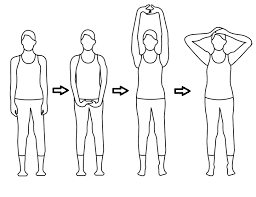
In the dynamic and revered practice of Surya Namaskar (Sun Salutation), each asana (yoga pose) plays a crucial role in creating a harmonious and transformative flow. Among these foundational poses is Tadasana, also known as the Mountain Pose. By understanding the significance and technique of this pose, practitioners can unlock a deeper connection to the sun and amplify the benefits of their Surya Namaskar practice.
## The Significance of Tadasana in Surya Namaskar
Surya Namaskar is a 12-pose sequence that honors the sun, the celestial source of life and energy. Tadasana, the first pose in this series, serves as the foundation upon which the entire practice is built. This simple yet powerful pose sets the tone for the practitioner’s Surya Namaskar journey, providing a stable and grounded starting point.
In Tadasana, the practitioner stands with their feet together, arms at their sides, and their gaze forward. This posture symbolizes strength, stability, and a connection to the earth, preparing the body and mind for the dynamic movements that follow.
## The Physical Benefits of Tadasana
While Tadasana may appear deceptively simple, it offers a wealth of physical benefits that contribute to the overall practice of Surya Namaskar. This pose helps to improve posture, strengthen the legs and core, and promote a sense of balance and stability.
By standing with feet together, the practitioner engages the muscles of the lower body, including the quadriceps, hamstrings, and calves. This muscular engagement can help to enhance overall leg strength and stability, which is essential for navigating the more challenging poses within the Surya Namaskar sequence.
Additionally, Tadasana encourages the practitioner to engage the core muscles, fostering a sense of control and steadiness throughout the body. This core engagement can also help to alleviate strain on the lower back, promoting spinal health and alignment.
## The Mental and Spiritual Aspects of Tadasana
Surya Namaskar is not only a physical practice but also a meditation in motion. Tadasana, with its grounded and centered posture, can help to cultivate a sense of focus, presence, and inner calm.
As the practitioner stands in Tadasana, they are encouraged to breathe deeply, allowing the mind to quiet and the attention to turn inward. This moment of stillness and introspection can help to reduce stress, promote a sense of inner peace, and foster a deeper connection to the present moment.
Moreover, the symbolic representation of the mountain in Tadasana can be seen as a metaphor for the practitioner’s own inner strength and stability. By embracing this pose with intention and reverence, the practitioner can tap into their own reserves of courage, resilience, and spiritual growth.
## Mastering the Technique of Tadasana
To fully reap the benefits of Tadasana, it is essential to focus on proper alignment and technique. Begin by standing with your feet together, toes touching, with your weight evenly distributed. Engage your quadriceps, lifting your kneecaps, and draw your navel in towards your spine to activate your core.
Keep your spine tall and your shoulders relaxed, allowing your arms to hang naturally at your sides. Gaze forward, with your head in a neutral position, and breathe deeply, allowing the expansion in your chest to guide the movement.
When transitioning out of Tadasana, maintain a sense of control and awareness, moving with intention into the next pose in the Surya Namaskar sequence.
## Incorporating Tadasana into Your Surya Namaskar Routine
To fully integrate Tadasana into your Surya Namaskar practice, approach each transition with mindfulness and intention. As you move from one pose to the next, be conscious of your breath and the sensations in your body, allowing the stability and focus of Tadasana to carry you throughout the entire practice.
Experiment with the pace of your Surya Namaskar, finding a rhythm that allows you to fully experience each pose. Pause in Tadasana, taking a moment to ground yourself, connect with the earth, and cultivate a sense of inner strength and presence.
## Conclusion
Tadasana, the Mountain Pose, is a pivotal asana within the Surya Namaskar sequence, offering a wealth of physical, mental, and spiritual benefits. By mastering the technique and incorporating this pose with intention, practitioners can deepen their connection to the sun and elevate their Surya Namaskar practice to new heights.
Whether you are a seasoned yogi or new to the practice of Surya Namaskar, exploring Tadasana can be a transformative experience. By embracing the symbolism and physicality of this pose, you can unlock a greater sense of stability, focus, and inner harmony, all while honoring the life-giving power of the sun.”